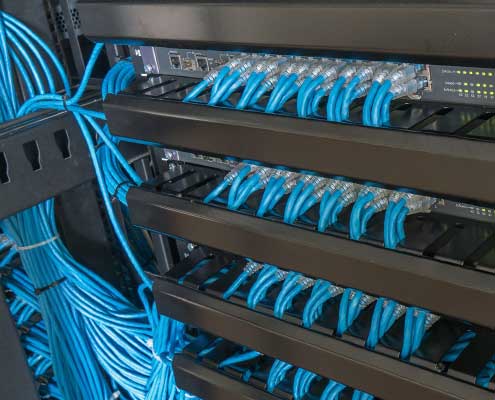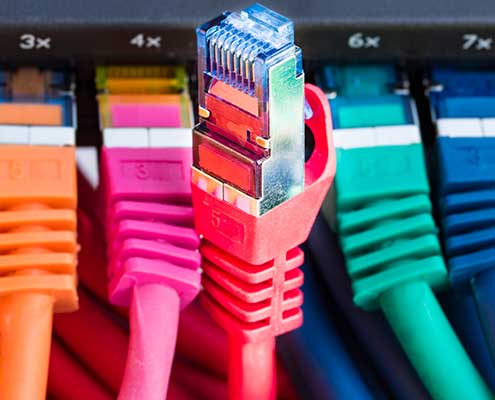Enterprise Networks
What Is an Enterprise Network?
An enterprise network is like a big, connected system of computers, servers, and other tech stuff. It helps people in a company talk to each other and share information. Employees can connect to shared resources, applications, and databases, making it easier for everyone to work together and get things done efficiently.
Building a Reliable Enterprise Network
It’s vital that an enterprise network is reliable. After all, it’s an infrastructure which provides the heartbeat of any modern business. This is why you need to build it carefully, using not only the best materials, but also the right materials for your business needs.
Choosing the Right Type of Network Cabling
Your network will only ever be as good as the cables connecting it together. Therefore, cutting corners in this area is a major mistake. Instead, you need to choose the data cabling which is best for your unique needs. The most common types of data cabling used within enterprise networks are:
- Cat 5: this cabling employs unshielded twisted pair copper cables with a bandwidth of up to 100MHz, covering distances of up to 100m. Data signals can travel at speeds ranging from 10Mbps to 100Mbps. An enhanced version, Cat 5e, can reach speeds around 1Gbps.
- Cat 6: a more contemporary approach to cabling that Cat 5, Cat 6 again uses twisted pair copper cables but with a bandwidth of 250MHz. It’s designed to transmit data signals at significantly higher speeds, reaching up to 10Gbps over a 55m distance. It can also boast more stable connections than Cat 5.
- Fibre optic: using glass fibres contained with an insulated sleeve, fibre optic cables are capable of transmitting data over long distances and at high speeds. Accordingly, you should find that fibre optic can transmit data up to a distance of 10km at speeds of up to 100Gbps.
Enterprise Network Hardware
When it comes to designing an enterprise network, you’ll need much more than just data cables. You’ll also need all the relevant hardware:
- Routers: used to direct and manage network traffic, routers are the means by which different devices communicate seamlessly with each other. As well as optimising data flow, they also provide security in conjunction with firewalls.
- Network hubs: networks are very busy infrastructures, often running multiple devices in busy environments. A network hub is a component which allows numerous devices, even if they’re located in different areas, to connect to the same network.
- Network gateway: serving as a bridge between different networks, network gateways allow seamless communication and data exchange. They ensure that your network can manage traffic, enhance overall network efficiency and boost the security of your network.
Installing and Configuring Your Network for Optimal Performance
Networks are complex infrastructures, and they need to be designed correctly to deliver the best performance. With this in mind, you need to carry out the following when configuring your network:
- Assess and plan: It’s crucial that you carry out a thorough assessment of your network needs, this will allow you to tailor the installation to your specific needs.
- Scalability: you should always keep one eye on the future when designing your network architecture. Future business growth could come sooner than you think, and your network needs to be able to accommodate this with the minimum of fuss.
- Redundancy: implementing redundancy in your core components is one of the most important steps in building a network. This ensures your network will be able to maintain its operations during emergencies and preserve business continuity.
- Maintenance and upgrades: regular maintenance is essential when it comes to optimising the performance of your network. By looking after your network, you can rest assured it will continue to operate at a high level. Likewise, investing in upgrades will keep your network relevant and competitive as technology moves forwards.
Inspecting and Upgrading Your Enterprise Network
Regular assessments identify vulnerabilities, ensuring data integrity. As our networks evolve, business needs change and technology develops, inspecting and upgrading your enterprise network is crucial for optimal performance and security.





